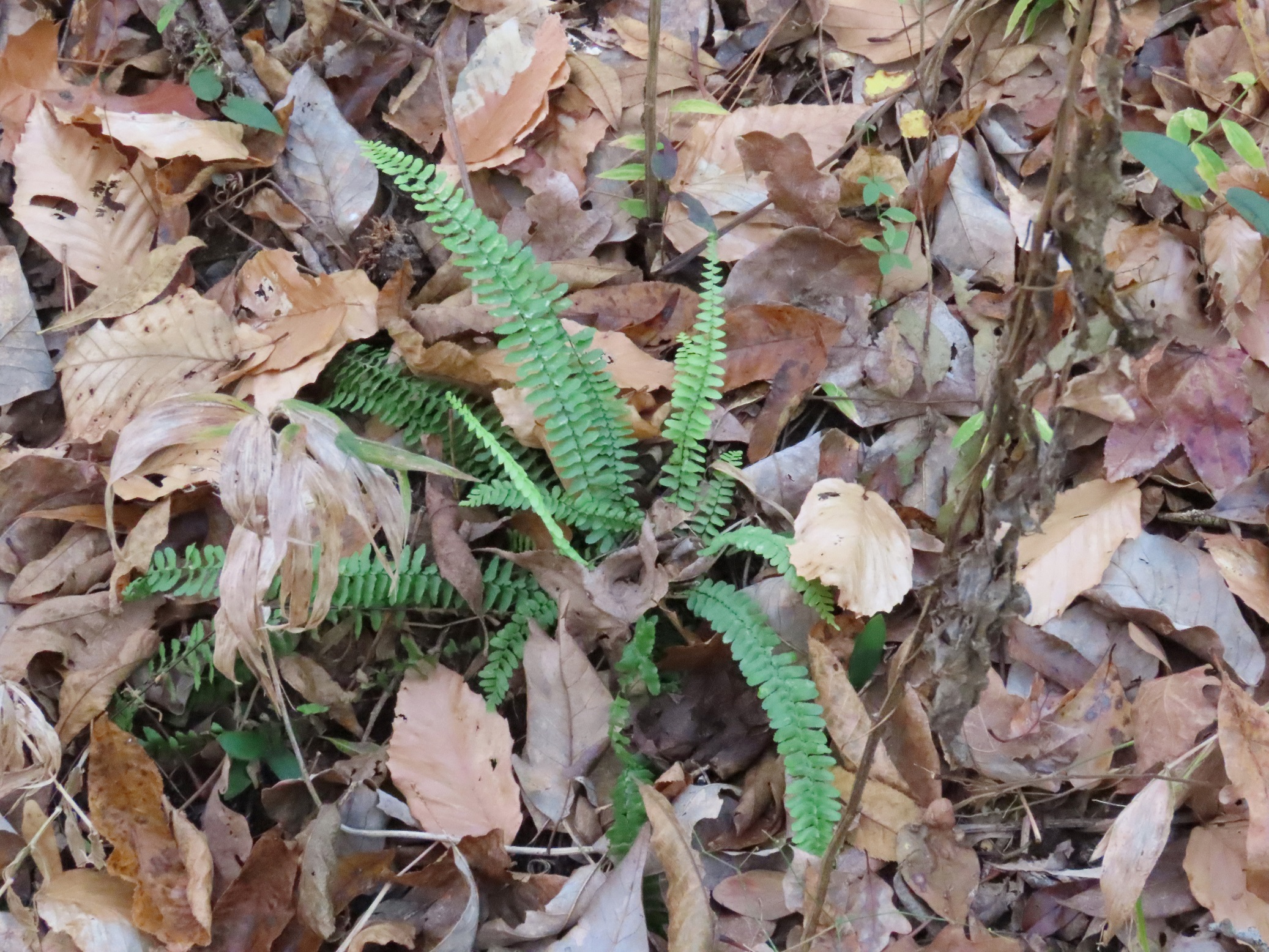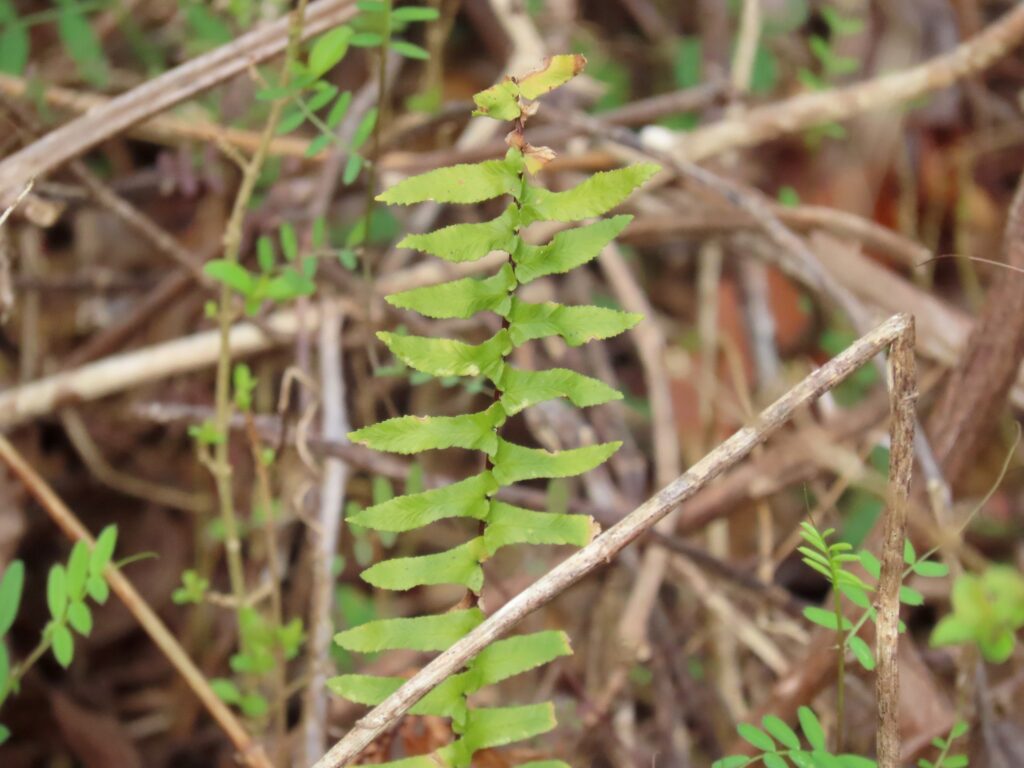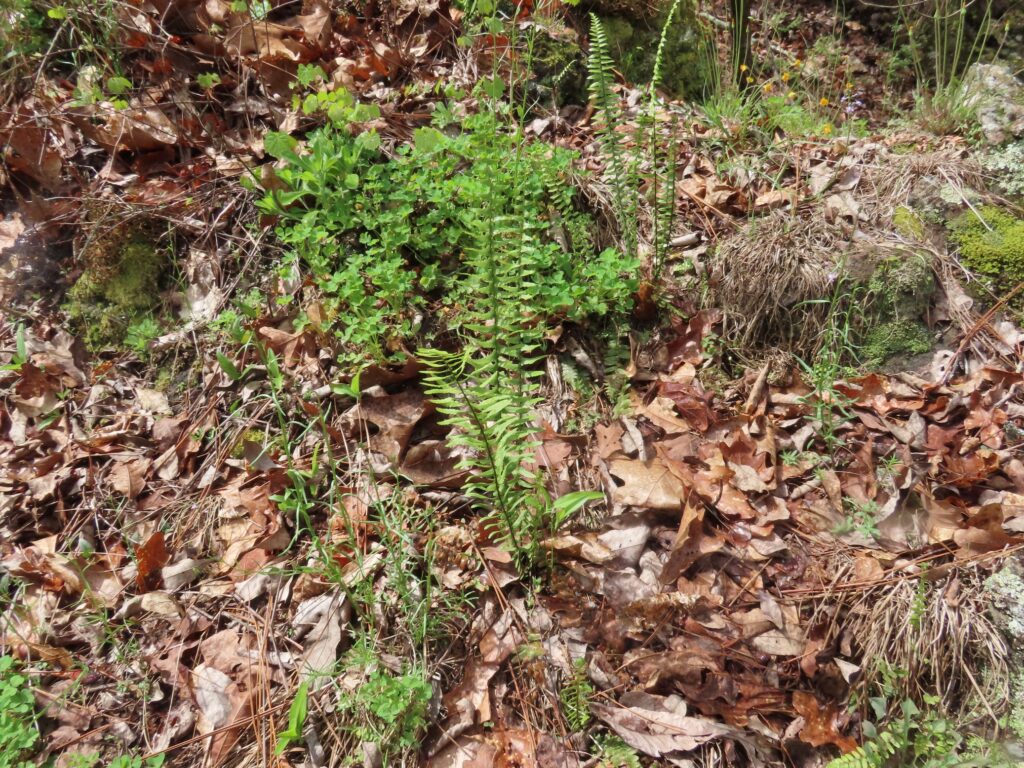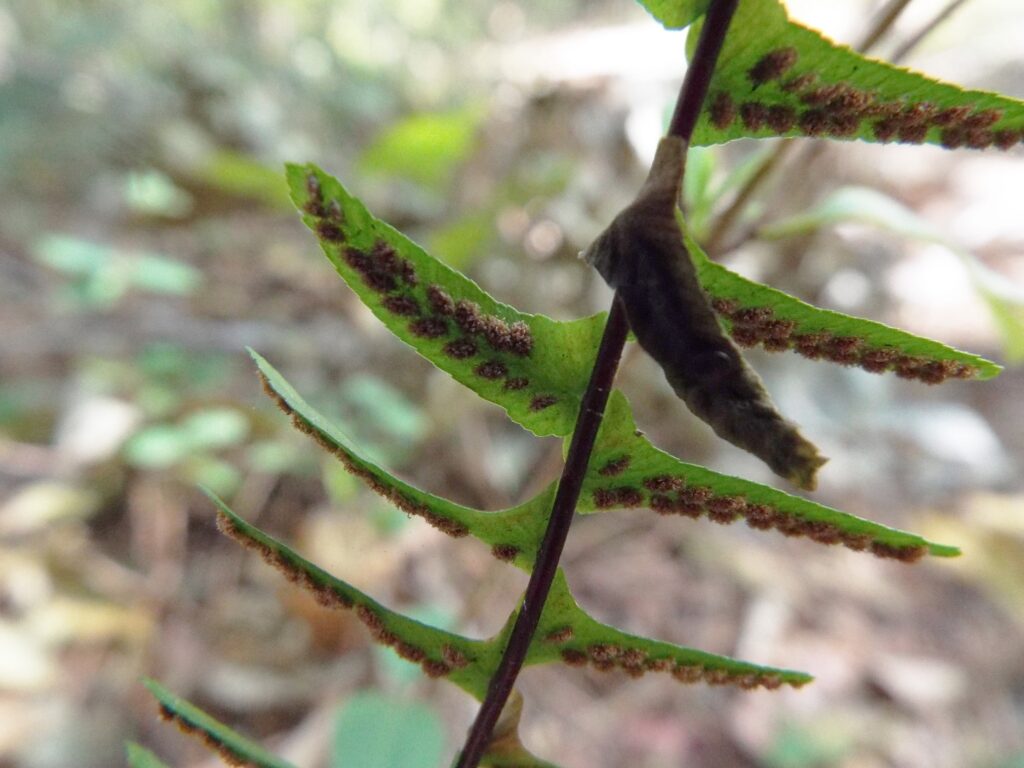




This week for Flora and Fauna Friday it’s a ubiquitous upland fern found from the foothills to our forested floodplains, Ebony Spleenwort (Asplenium platyneuron).
Ebony Spleenwort is a small, perennial fern common throughout all of South Carolina and the whole of the Eastern United States. It has narrow fronds about an inch wide and a foot long with a rather simple feather-like shape. The fronds have only one level of division, with many short and rounded leaflets, or pinnae to be precise, arranged alternately along the central rachis. That rachis is a deep ebony-black in color and gives this fern the first part of its common name. The “spleen” part of their common name is a reference to the shape of their sori, or the spore producing structures on their reproductive leaves. The sori of spleenworts are, well, spleen-shaped. Does a spleen really have a specific shape? No, not really. They’re kind of just a lumpy semi-circle. Also “wort” just means plant. Regardless of any namesake spleen-shaped features, the black rachis and thin, simply shaped fronds make Ebony Spleenwort one of our easiest ferns to identify. Which is a good thing because it’s everywhere!
Ebony Spleenwort can be found growing out of cracks in rocks in the Appalachian Mountains, peppering the forest floor in the piedmont uplands, cresting sedimentary ridges in our coastal floodplains, growing beneath our Oaks here on the Sea Islands of the Lowcountry, and even out the mortar of old chimneys and brickwork. It’s hard to find a corner of the Carolinas where it isn’t. Like all ferns, Ebony Spleenwort reproduces via spores, which float listless on the wind to far off lands. However, unlike some of our other prolific ferns, Ebony Spleenwort doesn’t form colonies through root propagation. Yet, it does have a unique adaptation to life in the forest. Ebony Spleenwort can produce “proliferous buds” near the base of its fronds. These don’t let the plant spread laterally but they do help it move vertically. If the plant becomes buried in leaf litter or sediment, rather than be smothered, it can shift its growth upward an inch or so to keep on growing in the same spot.